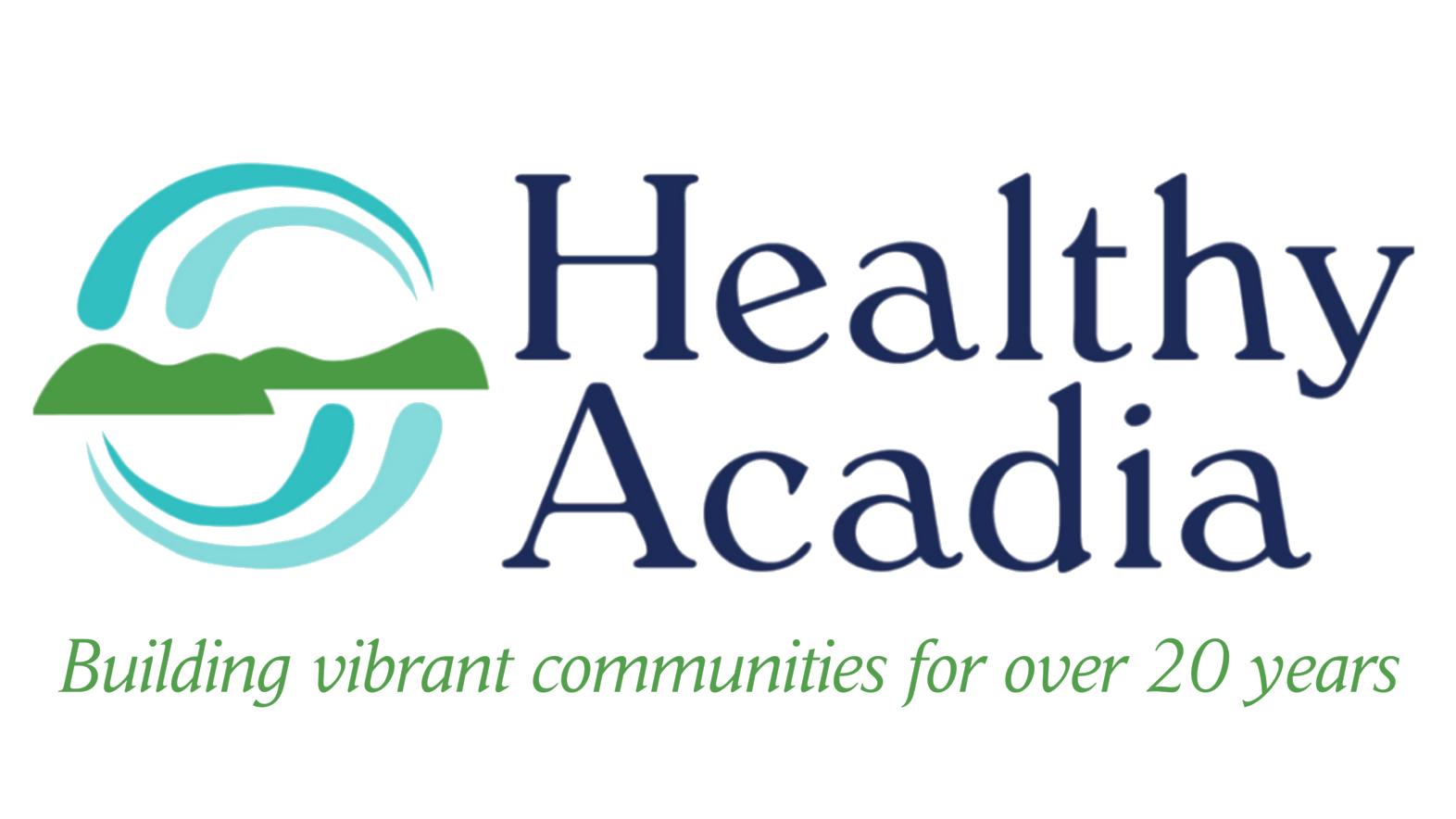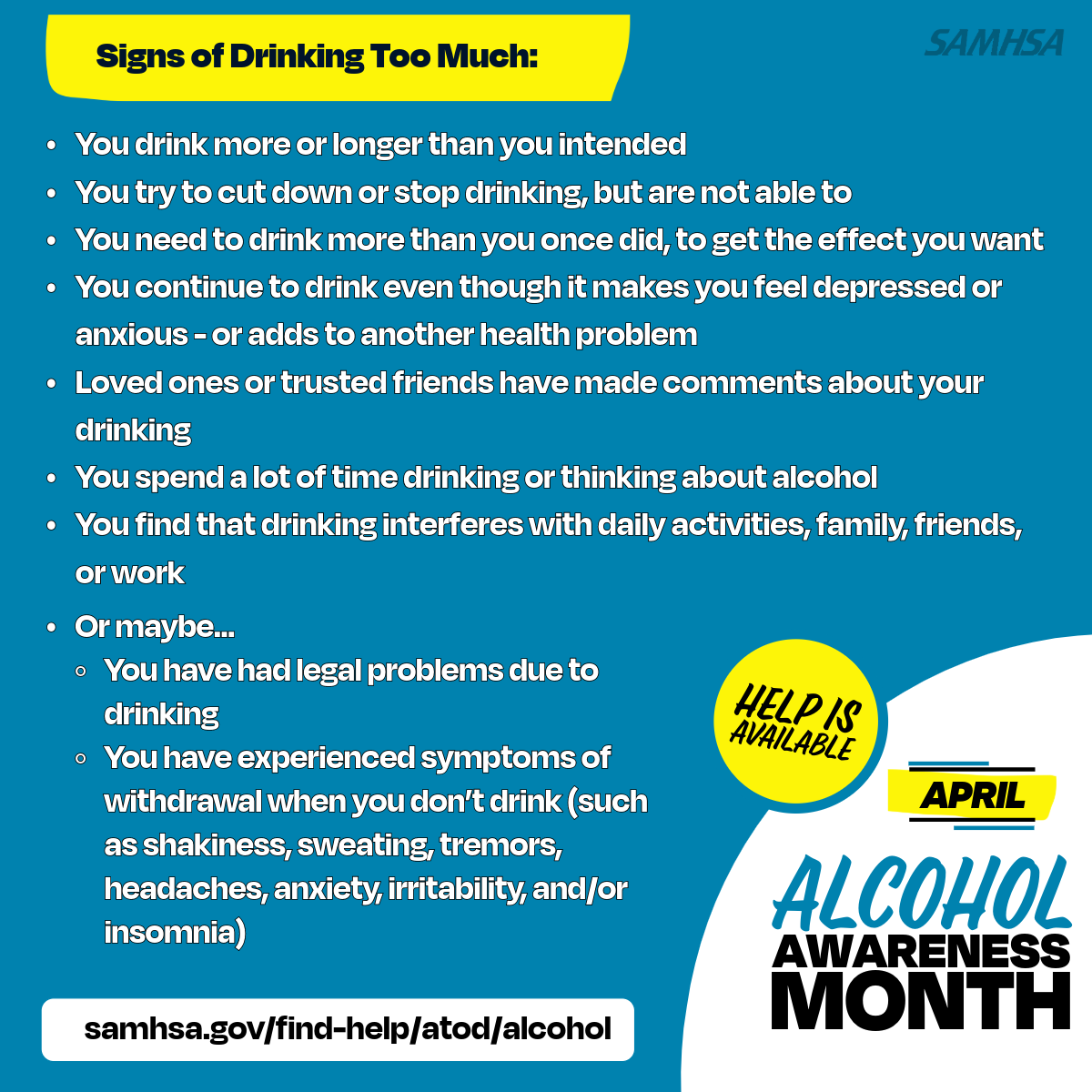April is Alcohol Awareness Month
April is Alcohol Awareness Month, a time to raise awareness and understanding of alcohol use and misuse. If you are 21 years of age or older and drink alcohol, it’s important to be mindful of your alcohol use patterns - including how much you drink, and how often - and how they may impact your health.
Low-risk Drinking
If you are 21 or older and drink alcohol, you may wonder what is considered “low-risk” drinking. According to the National Institutes of Health, low-risk drinking for men means no more than 4 drinks on any single day and no more than 14 drinks per week. For women and for anyone over age 65, “low risk” means drinking no more than 3 drinks on any single day and no more than 7 drinks per week. For men, it is defined as no more than 4 drinks on any single day and no more than 14 drinks per week. Some adults are encouraged not to drink alcohol at all, including women who are or may be pregnant. For most who adhere to these guidelines, their general risk of developing an alcohol use disorder is relatively low.
What is a Drink?
Learn about standard servings of alcohol - it’s often less than you think. One standard drink generally means one 12-ounce beer, one 5-ounce glass of wine, or one 1.5-ounce shot of liquor. Alcohol content may vary widely by the type and size of the drink. Mixed drinks can contain several servings of alcohol, and certain beers have higher alcohol content.
Depending on the recipe, a cocktail may contain multiple serving sizes of alcohol. Know how much alcohol is in your mixed drink. Nothing can lower blood alcohol concentration - or BAC - except time. A driver’s BAC cannot be above 0.08 grams per deciliter or 0.08 percent if he or she is of legal drinking age. If a driver is under 21, Maine has a zero tolerance law - no alcohol is permitted while operating a motor vehicle, or otherwise - for individuals under age 21.
High-Risk Drinking
Binge Drinking
The Substance Abuse and Mental Health Services Administration (SAMHSA) defines binge drinking as 4 or more drinks for a woman or 5 or more drinks for a man on the same occasion on at least 1 day in the past 30 days. Extreme binge drinking, or high-intensity drinking, means drinking at levels far beyond the binge threshold.
Heavy Drinking
SAMHSA defines heavy drinking as binge drinking on each of five or more days within the past 30 days.
Binge drinking or heavy drinking increases the risk of harmful consequences, including the development of an alcohol use disorder and other negative health impacts.
Mixing Alcohol with Medicine
Combining alcohol with certain medicines, including over-the-counter medications, can be dangerous and cause health problems. When some drugs interact with alcohol, they may reduce your ability to concentrate or react to dangerous situations and cause other harmful side effects. Talk with your doctor or pharmacist to learn which medications are unsafe to combine with alcohol.
Take Action
Over time, excessive alcohol consumption can lead to the development of chronic diseases and other serious issues that affect your quality of life, and physical and mental health.
Alcohol is the most prevalent substance involved in substance-related emergency department visits. More than 140,000 deaths occur every year in the United States due to excessive alcohol use. SAMHSA’s recently released Drug Abuse Warning Network (DAWN) short report offers important statistics about the role of alcohol in emergency department visits. https://store.samhsa.gov/product/dawn-alcohol-related-short-report/pep24-07-019.
If you or someone you know is struggling with alcohol use or misuse, help is available.
Click here to explore Healthy Acadia’s prevention and recovery resources.
Check your alcohol use at www.alcoholscreening.org or bit.ly/3PDwBjj
Check out SAMHSA’s National Helpline and resources.
Visit The National Institute on Alcohol Abuse and Alcoholism’s Rethinking Drinking page for interactive resources to help examine drinking patterns.
Visit the Centers for Disease Control and Prevention for additional resources and information about alcohol use and your health.
Talk with your doctor or healthcare provider about your drinking or visit preventionforme.org/the-sipping-point/ for more information and resources.



